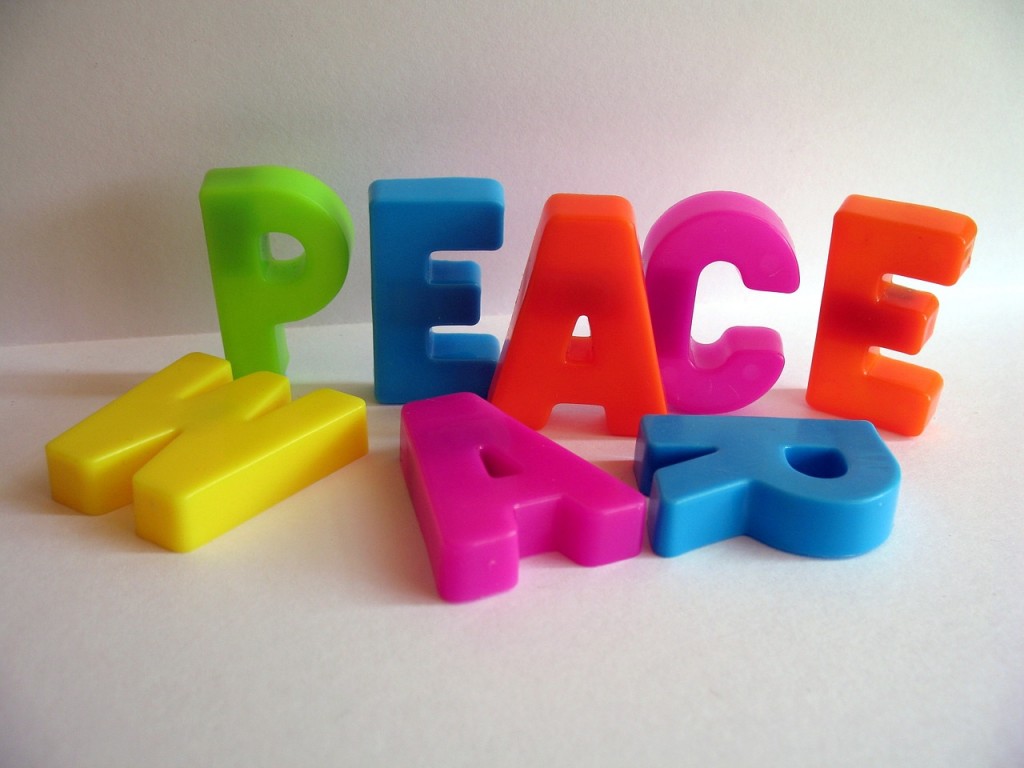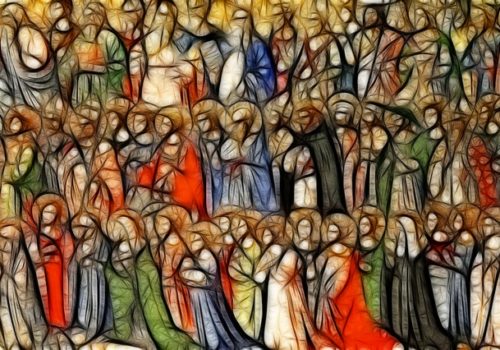Download PDF: The Crossroads of Religion, Violence, and Peace
We welcome you to the fifth issue of Practical Matters. This issue is dedicated to the interdisciplinary study of the ways that religion and religious practices contribute to both violence and peace. This is, in many ways, an old subject. Indeed, as both Talal Asad1 and now William Cavanaugh2 have argued, the framing of the Enlightenment project itself, whatever we would make of it, has been tied up with myths and metaphors of the violent nature of religion—which is in itself, they would argue, a dubious category. The Wars of Religion echo in any conversation around religion and violence, at least, any conversation in Europe or North America, where this journal is geographically situated. Yet, this is also a new subject. For much of the twentieth century, many intellectuals wrote off religion as dying and irrelevant. The Arab-Israeli wars; the Iranian Revolution; the mass suicide at Jonestown, Guyana; the religious and ethnic conflicts of the 1990s; and now September 11th and the once-named War on Terror have come as a shock to those who accepted the thesis of religion’s demise, which included not only academics but also foreign policy experts and military strategists. Ever since, academics, political actors, and grassroots activists have been scrambling to answer the overly broad and partly problematic question, what does religion have to do with violence and what can it contribute to peace?
You will not find a definitive answer in this issue, but you will find a series of steps that the editors of and contributors to the journal were committed to take in order to further our understanding of the intersections of religion, violence, and peace. The first step was to place this conversation in the context of religious practices and practical theology. One of the seminal works in arguing for religion as a resource in diplomacy was Religion: The Missing Dimension of Statecraft.3 This work included theory but also case studies of ways in which religious actors, acting out of their traditions and within religious institutions, helped bring peace to areas across the world. We reaffirm that jumpstart to the conversation, as it is irresponsible to talk about how religion plays a role in conflicts and peacebuilding without looking at the institutions, theologies, and actors on the ground that have been both working toward peace and contributing to conflict. We also further this first framing by bringing together scholars, practitioners, and scholar-practitioners to provide readers with a rich array of thought and practice on this question.
States of the Field and a Resource for Teaching
There was already a healthy subfield churning out works on religion and violence and religion and peace at the end of the twentieth century, but September 11th has increased this output, creating notable works but also many more dubious texts and arguments. At this point in time, we thought it would be helpful to take stock of where we have been and where we are going, and what better way to do this than to bring together scholars from different fields to discuss these issues in a publicly available venue? Thus the journal begins with a discussion of the theoretical work that has been done in the fields of religion and violence and religion and peace and points to avenues with potential for further exploration. R. Scott Appleby, who has been a leading voice in this conversation, particularly with his seminal work The Ambivalence of the Sacred,4 is joined by Atalia Omer, a leader in the next generation of scholars looking at these issues, in critically engaging Appleby’s concept of “ambivalence” in order to further develop it theoretically as a tool and resource to better think about the role of religion in the world. They are joined by scholars from disciplines as diverse as history (Edward L. Queen II), Christian ethics (Ellen Ott Marshall), and sociology (Philip Gorski) who respond to Omer and Appleby’s “state of the field” essays and suggest other avenues ripe for further exploration. This conversation, we hope, will contribute to the field by helping to refine these fields, which, as Appleby states in his essay, have become methodologically diverse in helpful but also unhelpful ways.
To supplement this work, we have also included two reflections from professors who have taught courses on these themes. The first reflection, written by M. Christian Green, Rodney Petersen, and Thomas Massaro, S.J., was an interdisciplinary course co-taught by the authors and several other professors at the Boston Theological Initiative, which includes multiple universities in Boston, in 2007. This reflection includes a copy of the syllabus and several resources used in the course. We have seen many syllabi on the themes of religion, violence, conflict, and peacebuilding, and the syllabus for this course is the best we have seen at integrating the wide range of material from multiple fields on these topics. The second reflection comes from two professors, one a practical theologian (Elizabeth Corrie) and the other an architect (Hazem Ziada), who co-taught an innovative course at Emory University’s Candler School of Theology on world religions through the lenses of “sacred space” and religious peacebuilding. Thirdly, we include an annotated bibliography from the editors that introduces those texts we believe are most helpful in understanding the emerging field of religion, conflict, and peacebuilding. We hope these are helpful resources for scholars sifting through the enormous amount of literature on these topics for the first time and for teachers crafting courses that will address these questions in interdisciplinary ways.
Beyond Theory: The Contributions of Practitioners
Just as important as the diversity of the field of study is the diversity of our contributors and contributions. The reader will find peer-reviewed work by scholars in the academy, but will also find practitioner reflections from: Rahel Wasserfall, an education evaluator, discussing the role food has played in history of the International Summer School on Religion and Public Life, an organization working on tolerance in religiously plural societies; Thomas Flores, a mediator, reflecting on the psychology of violence; Elizabeta Koneska, a curator at the Museum of Macedonia, screening an ethnographic video of different religious communities sharing the same sacred space; Ryan Rodrick Beiler, a photographer and writer who works for a church-based humanitarian development agency in Jerusalem, visually showcasing various modes of political engagement by Jewish, Muslim, and Christian actors in Palestine and Israel; Mazvita Machinga, a counselor, considering reconciliation practices in Zimbabwe; Wes Browning of Sema Films, a filmmaker who focuses on making documentaries that “allow people space to tell their own stories,” providing a brief documentary about the life of an Ethiopian refugee living in the United States; and Frank Rogers, a scholar-practitioner, describing the practice and use of a spiritual discipline he helped develop known as “the compassion practice.” The pieces include theoretical reflection but also take up, for example, the intriguing, mundane, and surprisingly difficult questions of sharing food, sharing space, and the politics and difficulties of the supper table.
Beyond “Exoticism”: Looking at the Local
Conflict happens in many places, and Omer is right in her essay to criticize the propensity of scholars to focus on violent conflicts in other countries, which when done in isolation smacks too much of orientalism and voyeurism. We have worked in this issue to strike a balance between domestic and international cases. We began this issue with the commitment to include work that did not focus solely on conflicts far from Emory’s campus. Agreeing with Omer’s critique, we highlight conflicts that occur here in the United States, especially conflicts that do not garner the attention they need or deserve nor grant those who research them the same status as researchers of international issues. In that spirit, we include an interview with Rev. Dr. Raphael Warnock, a pastor in Atlanta who led his congregation in protests of the state-instituted violence of the execution of Troy Davis. We also feature an interview with influential Christian ethicist Stanley Hauerwas about the nature of Christian nonviolence in relation to the morality of the American military. Similarly, our peer-reviewed material contains an exploration from AnneMarie Mingo on the legacy of racism-motivated violence and the possibilities of continued restorative justice in Rosewood, Florida. Finally, Edward Curtis reflects on the complexities of doing public scholarship on Islam in the United States, probing the difficulties of bridging the professional and methodological standards of the academy with the demands and compressed timeframes of popular public discourse. Clearly, the intersection of religion and violence does not occur only beyond the borders of the United States.
The Academic Journal as a Place of Collaboration
This journal is hosted by Emory University, particularly Candler School of Theology and the Initiative in Religious Practices and Practical Theology in the Graduate Division of Religion. And this issue was a collaboration between these programs and Emory’s Program in Religion, Conflict, and Peacebuilding. As this issue hopefully shows, Emory is its own crossroads in which it is possible to constructively probe the issues around peace and violence. This issue, then, is transdisciplinary by mission and design but also highly collaborative, bringing together different academic areas of inquiry to further public knowledge about these areas of concern. This journal aspires to such ends, and we both hope this issue is a helpful product of a rich and supportive educational environment.
Conclusion
The question of how religion contributes to violence and peace is a lasting one, yet its academic pedigree, as we have tried to show, is in many ways surprisingly new, even if it cannot help but work within the imaginaries, such as the secular versus religious frame, it has inherited. The reader will not find every religion represented here. This issue of Practical Matters is not a comprehensive treatment of the topic, and there were many religions, issues, questions, cases, and geographies we wish we could have included. No editor can publish a work without excitement for what is included or without regret for what was left unsaid. This is one of the main reasons we have included both general pieces, such as a bibliography, a syllabus, and states of the field, and particular pieces, such as case studies and organizational histories, so that this issue can serve as a starting place for both students and teachers to build upon what we have gathered here. We hope readers will accept this issue with the excitement with which we approached it as authors, editors, and artists.
We conclude with words of thanks for those who have contributed to the completion of this project. First, we thank those Emory faculty members who have served as consultants and advisors to this issue: Edward Queen, Ellen Ott Marshall, Tara Doyle, Pamela Scully, and Abdullahi An-Na’im. In addition, we thank the journal’s faculty advisory board: Liz Bounds, Tom Long, Gary Laderman, and Joyce Burkhalter Flueckiger, for their devotion and service. Finally, we thank the staff of Practical Matters and everyone else who worked behind the scenes to produce this issue, and we thank the contributors for their important work and willingness to publish that work in this venue.
Notes
- Talal Asad, Genealogies of Religion: Discipine and Reasons of Power in Christianity and Islam(Baltimore: Johns Hopkins University Press, 1993).
- William T. Cavanaugh, The Myth of Religious Violence: Secular Ideology and the Roots of Modern Conflict(New York: Oxford University Press, 2009).
- Douglas Johnston and Cynthia Sampson, eds., Religion: The Missing Dimension of Statecraft(New York: Oxford University Press, 1994).
- R. Scott Appleby, The Ambivalence of the Sacred: Religion, Violence, and Reconciliation(New York: Rowman and Littlefied, 2000).






